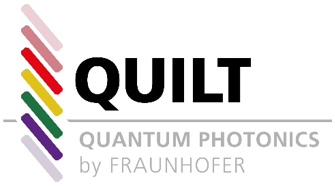


Brief description of the project
Established applications of quantum mechanics such as semiconductors, LEDs or lasers are based on collective quantum states. In the meantime, however, individual quantum states can also be specifically prepared and used. This "second quantum revolution" is also expected to bring about disruptive changes in science, economy and society. In addition to the much-discussed quantum computing, novel detection and imaging methods are also becoming possible. This is what the lighthouse project QUILT - Quantum methods for advanced imaging solutions - is all about.
Project goals
The goal of QUILT is to further develop hitherto rather academic concepts of how entangled photon pairs can be used for imaging purposes into application-oriented technology demonstrators. One such concept is quantum ghost imaging. The idea, simply put, is that if you detect one photon of an entangled pair, you learn something about the other; the two photons can have different wavelengths. At Fraunhofer IOSB in particular, the perspective goal is to realize imaging over longer distances, i.e. far beyond a laboratory bench.
Perspective
Quantum ghost imaging makes it possible in principle to illuminate a scene with infrared light (which is relatively insensitive to atmospheric interference), while using the far more suitable visible range for detection in the imaging sensor. In this way, the advantages of two spectral ranges can be combined in one system to surpass classical imaging in terms of quality.
 Fraunhofer Institute of Optronics, System Technologies and Image Exploitation IOSB
Fraunhofer Institute of Optronics, System Technologies and Image Exploitation IOSB